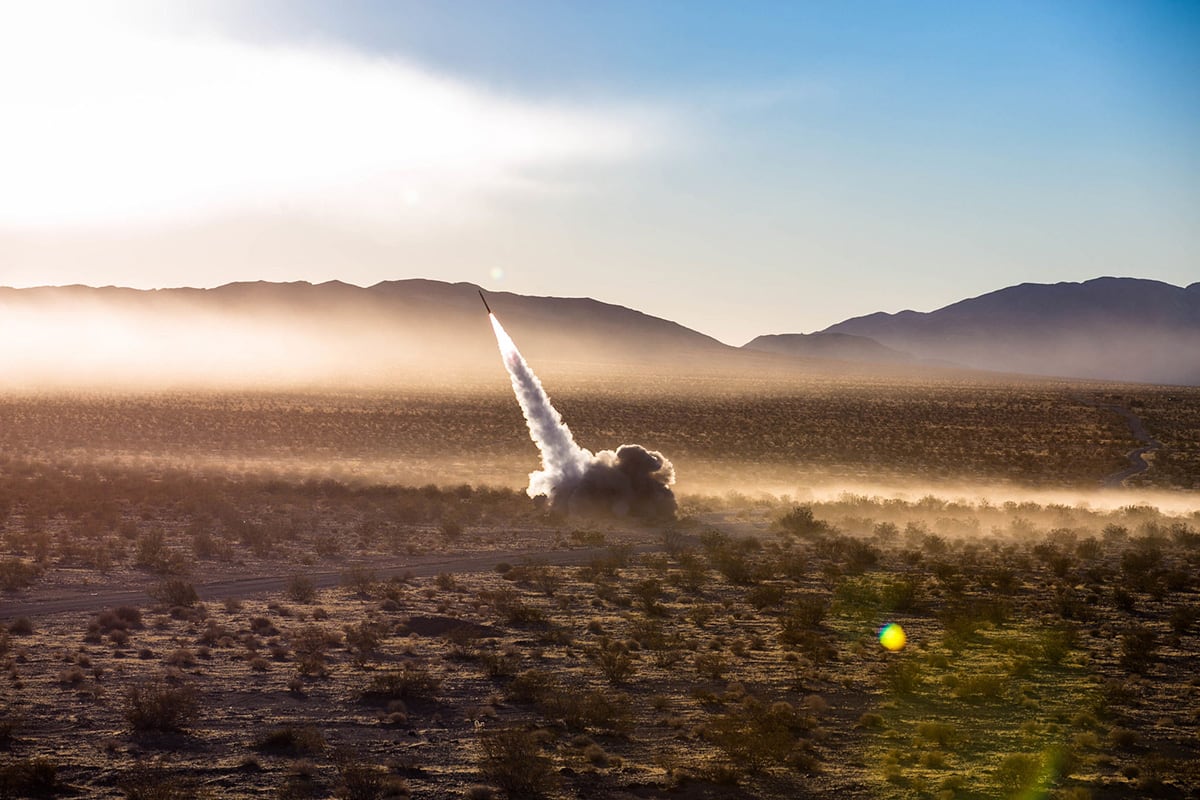WASHINGTON – The U.S. Marine Corps is getting into the ship-killing business, and a new project in development is aimed at making their dreams of harrying the People’s Liberation Army Navy a reality.
Highlighted in the Department of the Navy’s 2021 budget book, the Marine Corps is looking to pair existing vehicle designs, existing anti-ship missiles and a launcher to create the Ground-based Anti-ship Missile and Remotely Operated Ground Unit Expeditionary (ROGUE) Fires Vehicle. The Navy is requesting about $64 million for the project, according to the documents.
The program is an evolution of the Navy/Marine Expeditionary Ship Interdiction program that brought together anti-ship missiles with the Marine Corps’ High Mobility Artillery Rocket System (HIMARS). The Marines have been specifically eyeing the Kongsberg/Raytheon Naval Strike Missile, which was deployed to the Pacific last year on the littoral combat ship Gabrielle Giffords.
RELATED

The plan for ROGUE Fires Vehicle is to develop an unmanned ground vehicle built on the chassis of the Army’s Joint Light Tactical Vehicle, as well as a launcher that’s “capable of mounting a wide range of missile systems,” the Navy’s budget book says.
As for the GBASM component, the effort will “prototype other-service-developed missiles to provide a ground-based anti-access/area denial, anti-ship capability.”
In January, the Navy’s top acquisition official James Geurts, assistant secretary of the Navy for research, development and acquisition, said the Marines and Navy have been working closely on fielding NSM as part of the effort.
“Just yesterday [Jan. 14] we had the team in that has the Naval Strike Missile on LCS working hand-in-hand with the Marine Corps,” Geurts told a group of reporters at the Surface Navy Association symposium. “The Marine Corps does ground launchers, we do command and control. We’ll make that immediately available to the Marine Corps.”
The contractors working on the project are Raytheon, maker of the Naval Strike Missile, and Oshkosh, which makes the JLTV.
On the agenda for the ROGUE Fires vehicle in 2020 is to develop a working prototype, including the vehicle and launcher and start conducting off-road testing. The Corps plans to issue a launcher development contract in the first quarter of 2021, according to Navy budget documents. And for the missile itself, the documents call for a Navy and Marine Corps flight test in the second quarter of 2021.
The GBASM and ROGUE Fires Vehicle development project are part of a new concept that the Marines are moving out on to fight and defeat China in a Pacific conflict.
The Marine Corp’s concept of operations, as outlined by Commandant Gen. David Berger in last year’s planning guidance, calls for the Marine Corps to more intimately align itself as an arm of naval power than it has been during two decades of wars in Iraq and Afghanistan. As part of that, the Marines want to be able to spread their forces in small groups around islands in the Pacific and deny freedom of maneuver to the Chinese fleet.
Marine Corps requirements and development chief Lt. Gen. Eric Smith told reporters last year during the Expeditionary Warfare Conference that the Marines want to fight on ground of their choosing and then maneuver before forces can concentrate against them.
“They are mobile and small, they are not looking to grab a piece of ground and sit on it,” Smith said of his Marine units. “I’m not looking to block a strait permanently. I’m looking to maneuver. The German concept is ‘Schwerpunkt,’ which is applying the appropriate amount of pressure and force at the time and place of your choosing to get maximum effect.”
Smith describes a concept where the U.S. fleet can herd Chinese ships into a contested area where the Marines can do damage from the shore.
“So, if I’m maneuvering in support of the fleet commander in a contested, confined space, through the mobility I bring in air and with surface connectors I can get to a point and block or strike something that has been herded into a contested space – something that has been herded into that space by the fleet commander.”
David B. Larter was the naval warfare reporter for Defense News.










